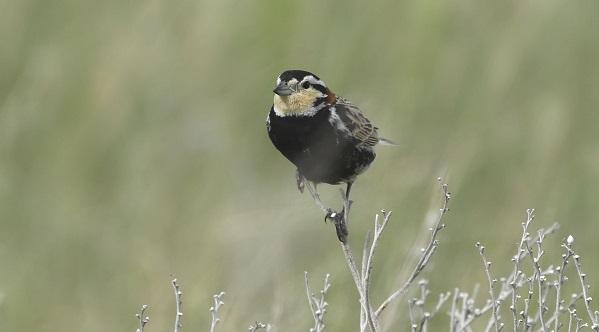Species
Conservation programs funded by the National Fish and Wildlife Foundation benefit hundreds of species and the habitats they depend on across the United States. NFWF has developed conservation strategies with measurable outcomes that track progress for many of these species. These species are good indicators of healthy habitats.
These strategies and metrics can be found in NFWF’s business plans developed by scientists and other experts, and approved by the Foundation's Board of Directors. NFWF programs fund conservation grants that implement the strategies and actions identified in the business plan.
Click on the species to learn a little about it, and which programs fund grants to conserve the species and its habitat.

Villosa mussels (Coosa creekshell)
The Coosa creekshell is a species of freshwater mussel that are endemic to the Coosa River Drainage in Alabama, Georgia and Tennessee. Increased sedimentation and reduced aquatic connectivity for host fishes like sunfish and sculpins have caused population declines throughout their range.

Sea turtles
There are seven different species of sea turtles, six of which are found in U.S. waters and are listed as threatened or endangered in a least a portion of their circumglobal range. These species include leatherback, loggerhead, Kemp’s ridley, olive ridley, green and hawksbill. For more than 100 million years, sea turtles have migrated long-distances over temperate and tropical oceans, spending most of their time at sea but returning to natal beaches to lay eggs.

Chestnut-collared longspur
The chestnut-collared longspur is a striking songbird highly endemic to shortgrass prairies of North America and known for its aerial displays when defending their territory. Named for the long claw on their hind toe, these ground-nesting birds have been in decline due to loss of native prairie and pesticides that are thought to reduce hatching success.

Karner blue butterfly
Karner blue butterflies measure only 1 inch wide, and are native to the oak savannas stretching from New York to Minnesota. The species requires specialized habitats where wild blue lupine is abundant, the exclusive food plant for Karner caterpillars. Populations were in steep decline following habitat loss and modifications, which prompted their listing as an endangered species in 1992.

Polar bear
Polar bears are found throughout the Arctic, with 19 populations spread across Alaska, Canada, Greenland, Norway and Russia. Due to their reliance on sea ice, and thus vulnerability to the effects of climate change, these large marine mammals are listed as threatened under the Endangered Species Act. Today, there are fewer than 4,000 bears within the U.S. populations.

Northern bobwhite quail
One of the most economically important game birds, the northern bobwhite quail is named for the distinctive 'bob-white' mating call of males throughout the breeding season. Bobwhite quail prefer shrubby areas surrounding grasslands or agricultural fields and live in groups called "coveys" during the fall and winter.

Corals
Found in shallow, tropical waters around the world, coral reefs are among the most iconic and diverse ecosystems on Earth. Despite covering less than 1 percent of the ocean, 25 percent of marine species rely on coral reefs, which are made up of many different species of coral. While corals are threatened by pollution, overfishing, disease and increasing ocean temperature resulting in widespread mortality, local conservation efforts coupled with advancements in coral restoration show promise for conserving this important ecosystem.

Sockeye salmon
Sockeye Salmon are normally anadromous – those that do not remain in freshwater their entire lives are sometimes known as “kokanee.” Sockeye suffer from degraded water quality, habitat loss, and changing ocean conditions. Progress is being made for this species via dam removal and efforts to increase instream flow.

Eastern oyster
Eastern oysters have played a particularly prominent role in the culture, history, and economy of the Chesapeake Bay and other areas throughout the Gulf and Atlantic Coasts. Reefs serve as important habitat for a variety of aquatic species. However, overharvesting, disease and declines in estuarine and bottom habitats have ravaged native oyster populations. Eastern oysters now represent less than 2 percent of their peak historical populations.

Red snapper
The red snapper is a long-lived reef fish typically found over deep reefs banks and rocky bottoms within the South Atlantic United States and the Gulf. Red snapper are one of the most popular sport fishes in the Gulf and support important recreational and commercial fisheries.

Brook trout
Brook trout are the only trout native to the eastern United States and inhabit coldwater rivers and lakes. Sensitive to even small declines in water quality and increases in sedimentation, brook trout can serve as excellent indicators of the health of a stream or river ecosystem.

Burrowing owl
The burrowing owl is small with long legs and found in open country throughout the Americas. Within the United States it is largely a western bird, with an isolated population in Florida. While the species is associated with burrowing animals, the Florida population digs its own burrows.